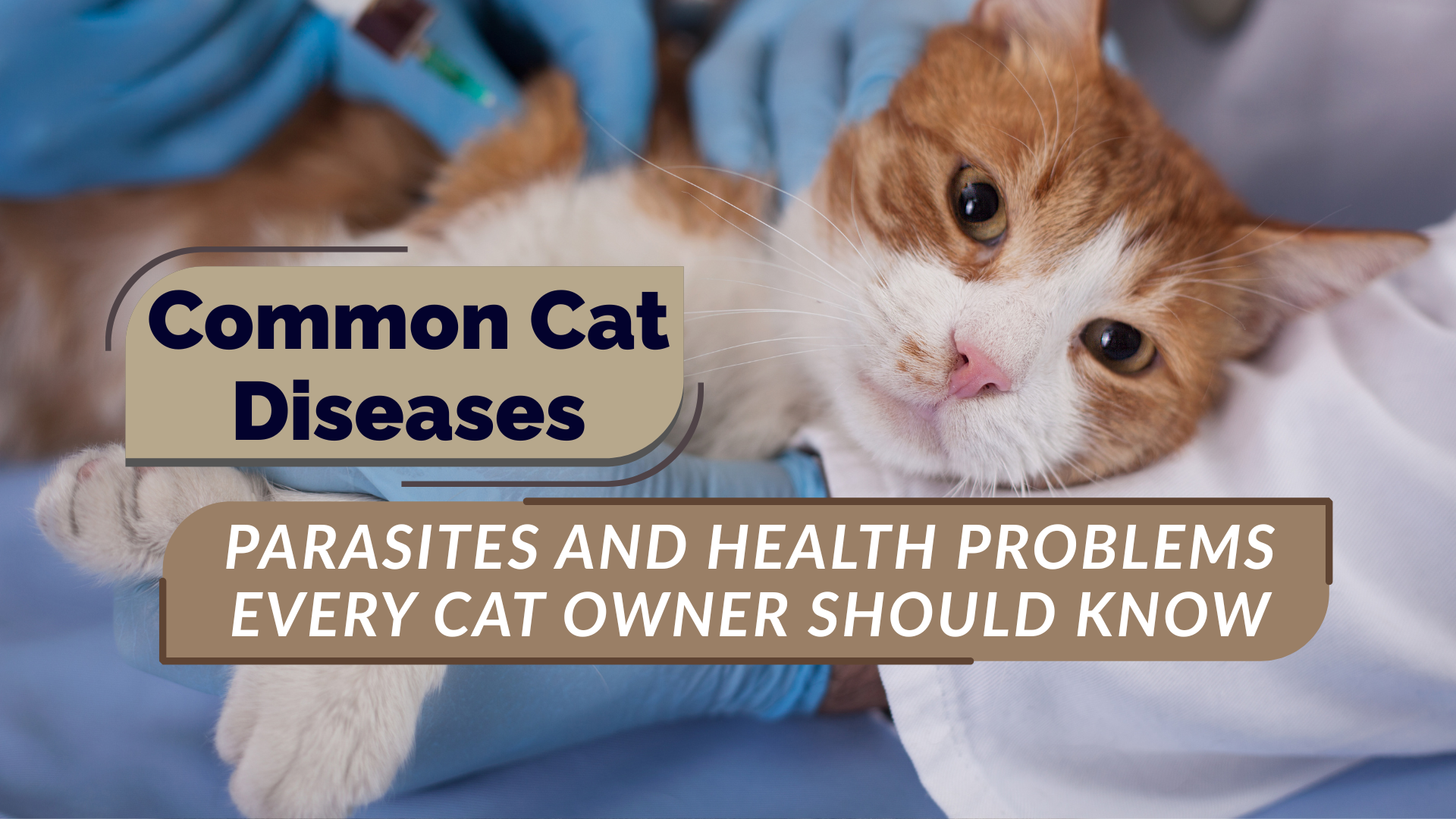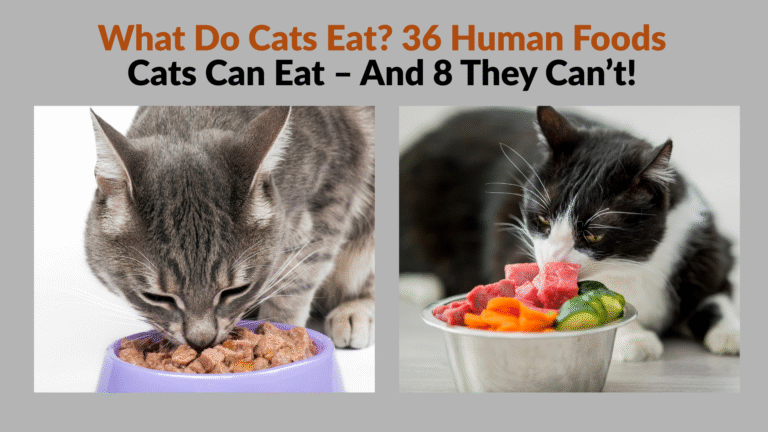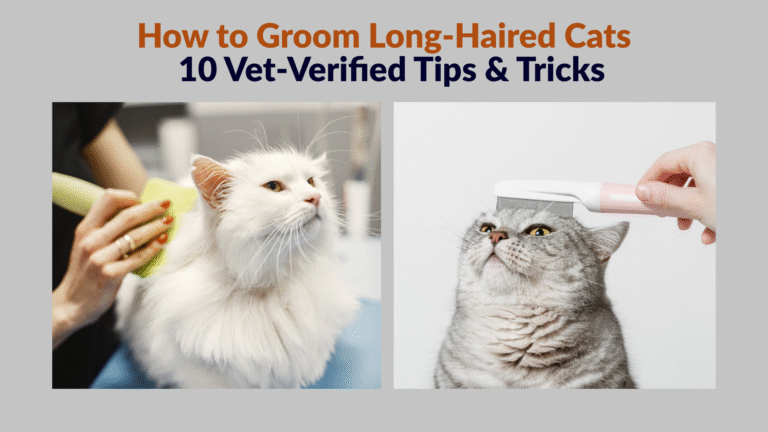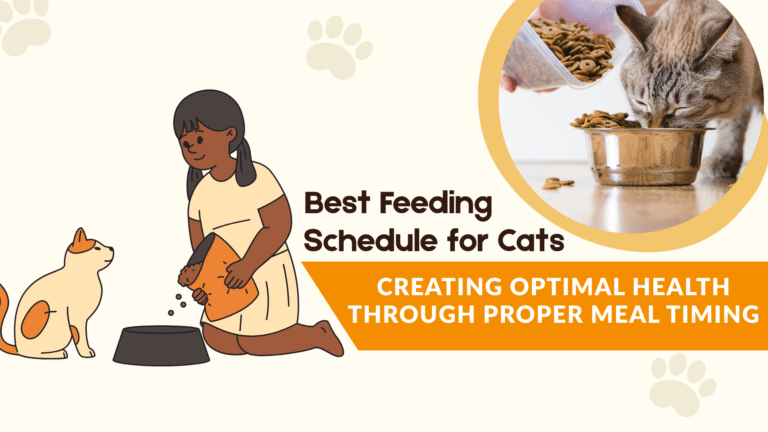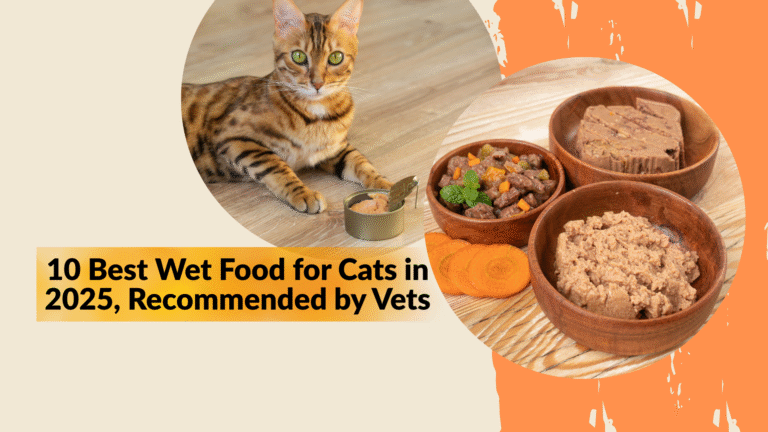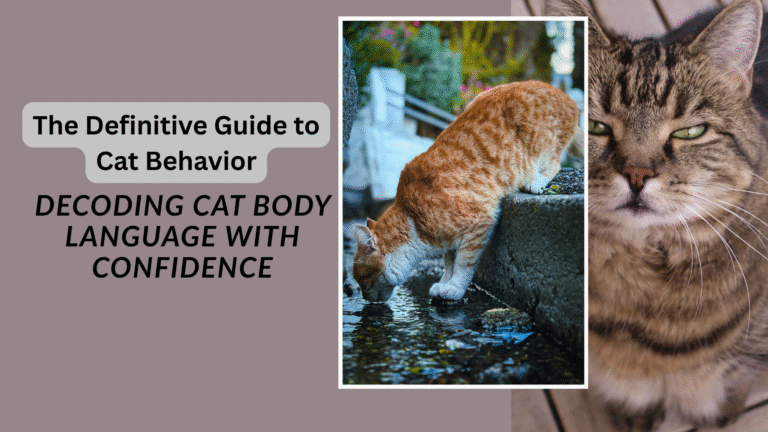25 Most Common Cat Diseases, Parasites and Health Problems Every Cat Owner Should Know
If you’re a cat owner, you know the drill: one night your cat is running wild around the house at 3 a.m., and the next it’s sleeping, refusing to eat. Cats are notorious for hiding illness until it’s too late. That’s why gaining knowledge of the most common cat diseases and health complications can literally be a lifesaver.
In this guide, we’ll explore the most frequent health issues cats face from parasites to kidney disease plus practical tips on spotting early warning signs. Think of this as your “go-to cat health handbook.”
1. What are the warning signs of disease in cats?
Before diving into specific illnesses, let’s talk about red flags. Cats are subtle creatures, but some changes scream “something’s not right.” Watch for:
-
Sudden weight gain or loss
-
Lethargy or hiding excessively more than usual
-
Vomiting or diarrhea
-
Coughing or sneezing persistently
-
Appetite or thirst changes
-
Bad breath or drooling
-
Lumps, bumps, or sores that don’t heal
Rule of thumb: If your cat’s behavior is abnormal for longer than a day or two, it’s worth a visit to the vet.
2. Infectious Diseases in Cats
They happen quickly and can kill if left untreated.
2.1 Feline Leukemia Virus (FeLV)
one of the main reasons why cats get cancer. They become more prone to infection because it weakens their immune system.
-
Symptoms: include weight loss, anemia, and recurrent infections.
-
Prevention: Vaccination and indoor captivity.
2.2 Feline Immunodeficiency Virus (FIV)
Also called “cat HIV.” It’s mainly spread through bite wounds.
-
Symptoms: include mouth ulcers, a dull coat, and recurrent infections.
-
Prevention: Male cat neutering lowers transmission and fighting.
2.3 Feline Infectious Peritonitis (FIP)
Caused by a mutation of feline coronavirus. Is lethal in most instances.
-
Symptoms: Swelling of the abdomen, fever, loss of weight.
3. Common Parasites in Cats
Parasites aren’t just gross they can be deadly.
3.1 Fleas
The itchy old pest. They can anemic kittens.
-
Tip: Year-round flea control.
3.2 Ticks
Rare indoors but lethal outdoors. They can transmit Lyme disease.
3.3 Worms (Roundworms, Tapeworms, Hookworms)
-
Symptoms: Puffy kittens, diarrhea, worms in stool.
-
Treatment: Deworming medication as instructed by your veterinarian.
3.4 Ear Mites
Causes intense itching and dark debris in ears. Cats head-shake a lot.
4. Cat Respiratory Health Problems
Upper respiratory infections are basically the “feline cold” of cats.
-
Causes: include bacteria, calicivirus, or feline herpesvirus.
-
Symptoms: include watery eyes, mouth ulcers, nasal discharge, and sneezing.
-
Care: Steam treatment, fluids, and sometimes antibiotics.
5. Digestive Disorders in Cats
Nothing triggers a cat parent into a panic like vomiting or diarrhea with no reason.
5.1 Hairballs vs. Chronic Vomiting
Even though the occasional hairball is normal, frequent vomiting could be a sign of something more serious, like gastritis or intestinal parasites.
5.2 Diarrhea
brought on by inflammatory bowel disease (IBD), infections, or dietary changes.
5.3 Constipation
commonly observed in older or water-efficient cats.
6. Kidney and Urinary Tract Diseases
6.1 Chronic Kidney Disease (CKD)
among the most prevalent feline diseases among the elderly.
-
Symptoms: include weight loss and polydipsia and polyuria.
-
Care: A specific diet and close veterinary supervision.
6.2 Feline Lower Urinary Tract Disease (FLUTD)
Blockage of the urine can be a painful medical emergency.
-
Watch for: straining, yowling, and hematuria in the litter box.
7. Endocrine Disorders
7.1 Hyperthyroidism
In older cats, very common.
-
Symptoms: include vomiting, restlessness, and weight loss despite a healthy appetite.
7.2 Diabetes Mellitus
-
Symptoms: include weight loss, polyuria (frequent micturition), and polydipsia (excessive thirst).
-
Care: Insulin therapy and dietary control.
8. Cat Skin and Coat Problems
-
Allergies → Itchy skin and patches of baldness.
-
Ringworm → A fungal disease, infectious to humans.
-
Dermatitis → Most often caused by fleas or food allergy.
9. Dental and Oral Diseases
Dental issues are frequently disregarded, but they can cause serious health problems.
-
Gingivitis and Periodontal Disease → Bad breath, tooth loss, and painful inflammation are symptoms of gingivitis and periodontal disease.
-
Stomatitis → Extreme inflammation of the mouth that usually necessitates extractions.
10. Cancer in Cats
Cats can develop tumors of the skin, intestines, or lymph nodes. Early diagnosis is essential.
📊 Quick Reference Table: Common Cat Problems at a Glance
| Condition | Common Symptoms | Risk Level |
|---|---|---|
| Fleas | Itching, hair loss | ⚠ |
| Kidney Disease | Excessive thirst, weight loss | ❌ |
| Diabetes | Frequent urination, lethargy | ⚠ |
| FIV | Recurrent infections | ❌ |
| Dental Disease | Bad breath, drooling | ⚠ |
| Hyperthyroidism | Weight loss, hyperactivity | ⚠ |
11. Prevention is the Best Medicine
-
Maintain current immunizations.
-
Prevent fleas, ticks, and worms
-
Daily dental care, such as brushing or dental treatments
-
Annual or semi-annual veterinary examinations
-
Living indoors reduces exposure to a variety of disease agents.
12. FAQs About Common Cat Diseases
Q1. What are the warning signs of disease in cats?
Unexplained weight loss, lethargy, vomiting, diarrhea, and bizarre behavior are all good indicators.
Q2. Can indoor cats still get diseases?
Yes! Indoor cats can still develop kidney disease, dental disease, or pick up parasites if prevention is not used.
Q3. How often should I deworm my cat?
Kittens need every 2–3 weeks to start with. Adult cats may need every 3–6 months depending on lifestyle.
Q4. Is feline leukemia contagious to other cats?
Yes, by saliva and close contact. Keeping the affected cats separated is crucially important.
Q5. Can cats get colds from humans?
Not directly but they can contract their own type of respiratory infections.
Q6. What should I do if my cat suddenly stops eating?
Loss of appetite for over 24 hours should visit a vet. Fatty liver disease can develop very quickly in cats if they do not eat.
Conclusion: Being a Proactive Cat Parent
Having a cat is all about cuddles, purrs, and silly antics. But loving them includes being on your toes for signs of something being wrong. Learning about the most prevalent cat illnesses and health issues will help give your kitty every chance at a long, healthy, and happy life.
Lastly, keep in mind that while cats can be mysterious, their health doesn’t have to be, so trust your instincts and keep your veterinarian’s number handy.

